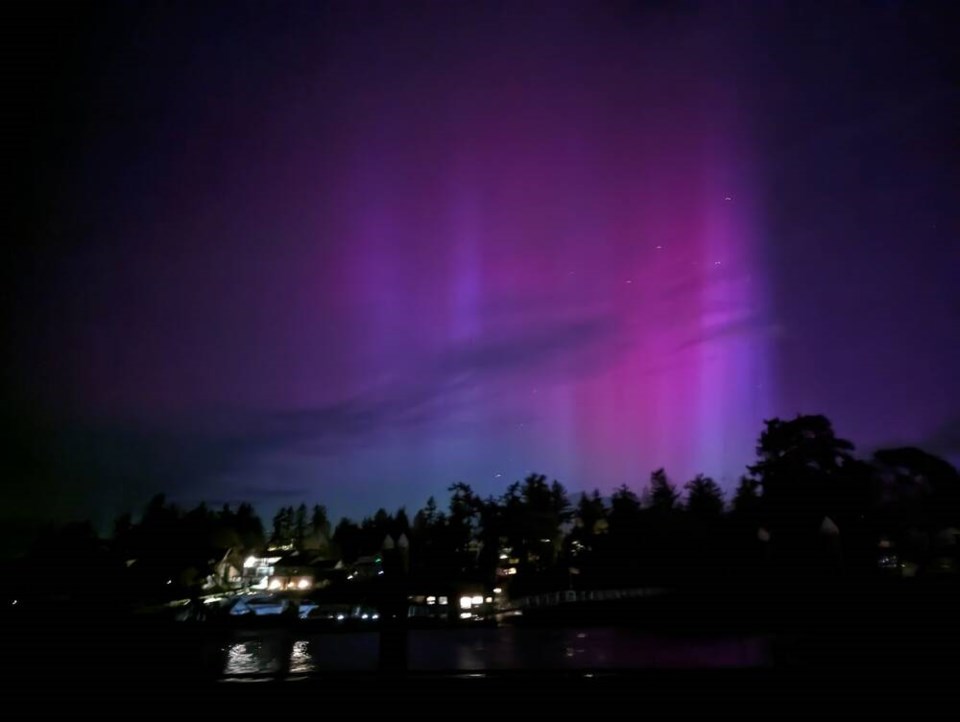Reports of the northern lights being seen dancing in the night over Greater Victoria has left people trying hard to catch a glimpse of the natural phenomenon.
Karun Thanjavur, senior lab instructor in the University of Victoria’s Department of Physics and Astronomy, said the lights — also known as the Aurora Borealis — are a rarity this far south, and are typically seen nearer the North and South poles.
The southern hemisphere equivalent is called the Aurora Australis.
But spotting the northern lights in this area with the naked eye isn’t common, and don’t expect to see the same vivid scenes that happen in places such as Whitehorse and Yellowknife.
“We’re just too far south to see that,” Thanjavur said.
The best way to see the lights — which are up to 600 kilometres high — is by snapping a picture of the sky and hoping you catch them, he said.
For those who want to try, note that Saturday and Sunday will be partly cloudy, followed by a clear sky forecast from Monday to Thursday.
“With a camera you can take a long exposure and you’ll be able to see kind of a nice, greenish hue on the northern horizon,” Thanjavur said. “That’s what people have been seeing.”
He said the lights are related to solar activity and the presence of sun spots — which are in turn linked to the sun’s magnetic field and the “complex dynamics” of the hot gas and plasma that make up the sun.
That can lead to large balls of charged particles being ejected from the sun’s surface into space, where they travel at supersonic speed, Thanjavur said. When they reach Earth a few days later, Earth’s magnetic field acts as a shield and deflects them so that they enter the atmosphere at the North and South poles.
“They excite the atoms in the Earth’s atmosphere,” Thanjavur said, giving them added energy.
The energy shows up as light, with different atoms emitting different colours of light such as red, blue, green and purple.
Green, associated with oxygen, is the most-common colour, while pink and dark-red are linked to nitrogen, and blue and purple come from hydrogen and helium.
The patterns that emerge are called an aurora — Latin for dawn.
“Because all this is related to the North [Pole] and the South Pole, that’s where most of the activity happens,” Thanjavur said.
But every once in a while the light show make an appearance elsewhere.
“Sometimes, the solar activity is so intense that the northern lights can be seen farther and farther south,” he said. “This year, the solar activity is reaching a maximum. Every 11 years, the solar activity cycles through. That’s why we are having so many of these reports of the northern lights.”
jbell@timescolonist.com



